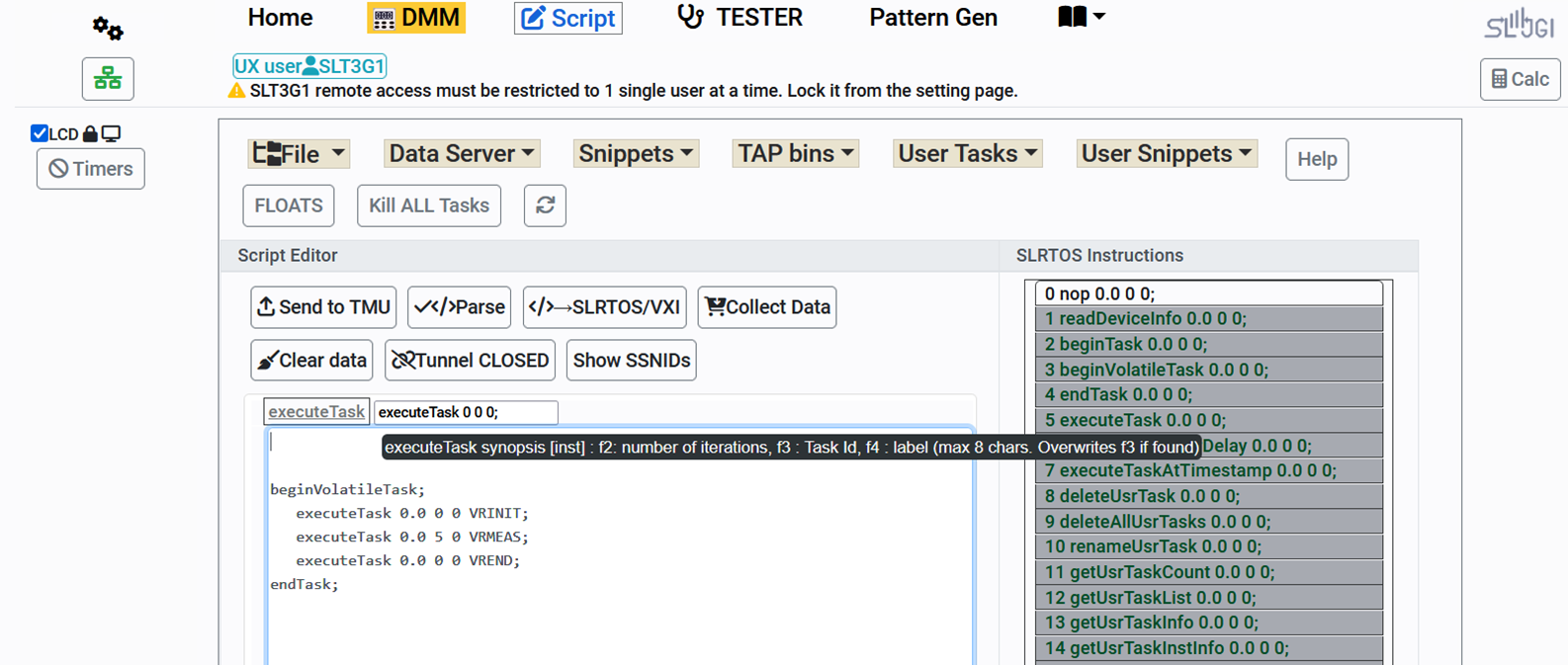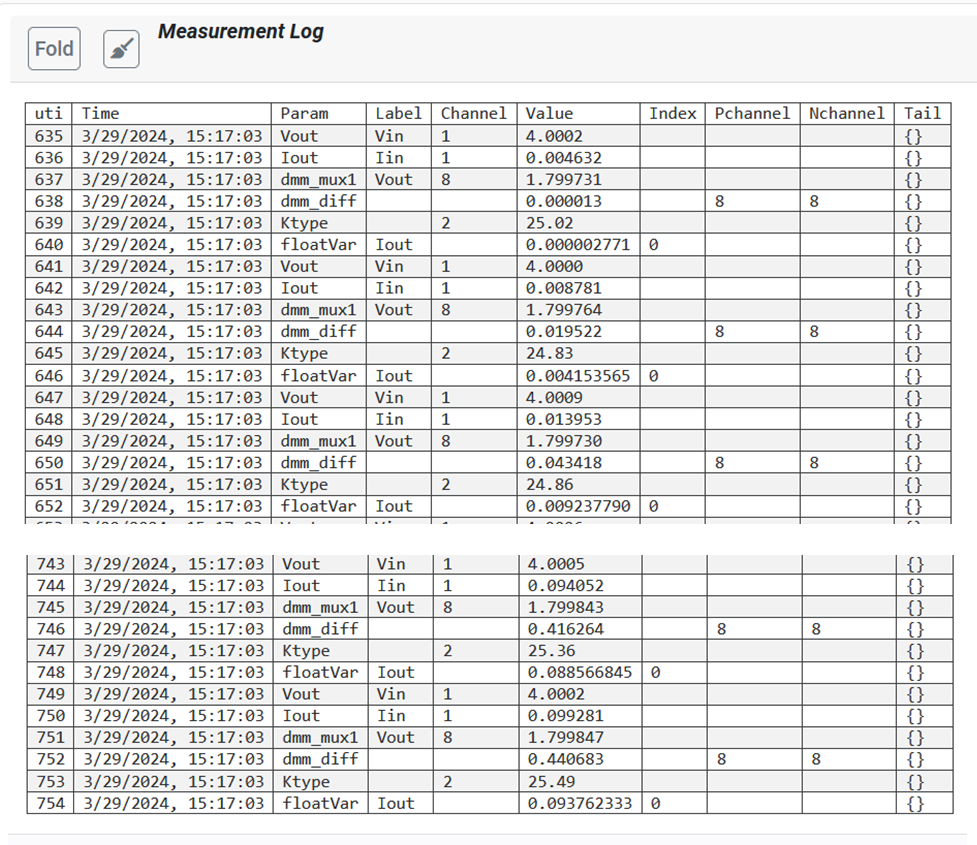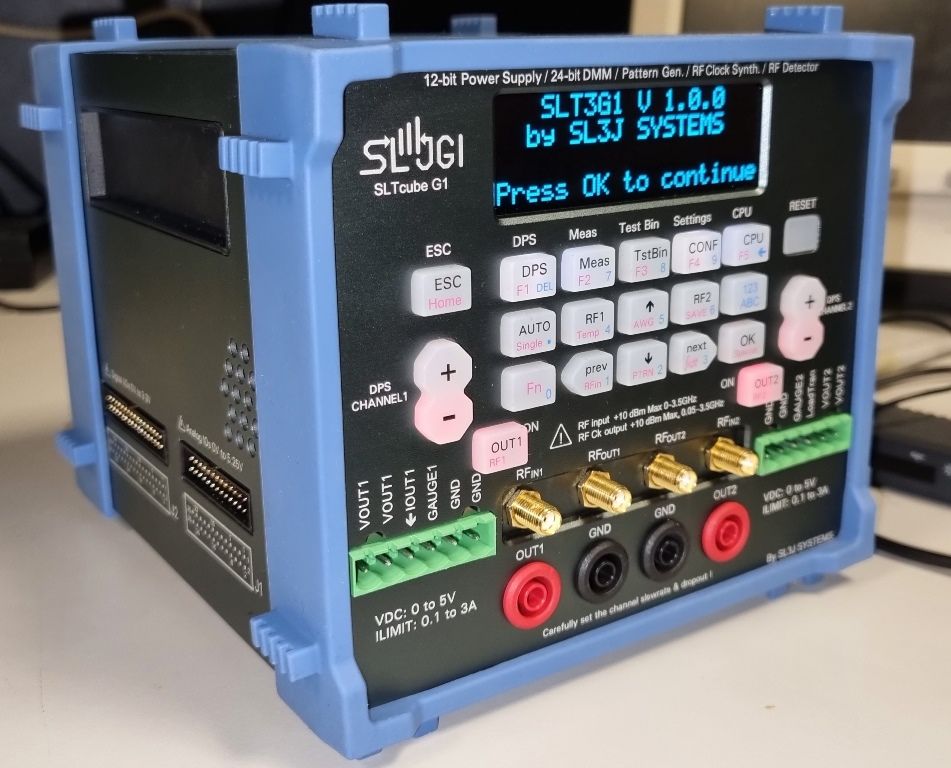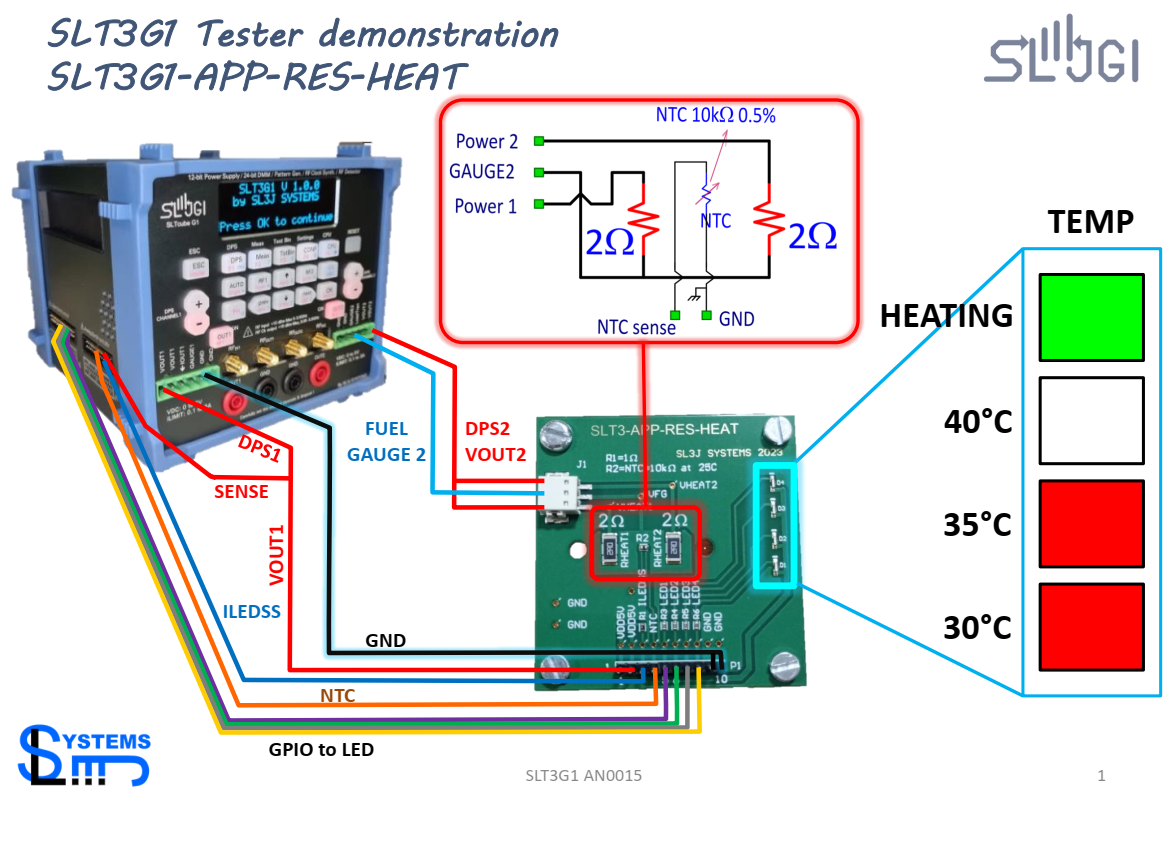AN0019
VR characterization with all-in-one Electronic Tester SLT3G1
SLT3G1_AN0019_VR_charac.pdf
Document: AN0019 Version 1.0.0,
Tester: SLT3G1 LOT2, HW 2.1.0B FW 0.9.6 UX 1.9.2 MV 1.9.2

Abstarct:
A simple demo of a characterization or Silicon Validation experiment handled entirely with 1 single instrument the SLT3G1 All-In-One Electronic Tester. The experiment consists of measuring the Quiescent current of a widely reknown linear Voltage Regulator NCP1117
Audience
- Electronic device App, Charac, Silicon Validation, and Test engineers
- Professors, lab teaching assistants
- Undergraduate and Graduate Engineers (EE, Embedded System, IoT)
Documents / download
Application Notes
Description
AN0019-SLT3G1-VR-CHARAC is an application note illustrating a straightforward demonstration of utilizing the all-in-one Electronic Tester SLT3G1 for semiconductor characterization and Silicon Validation experiments. Specifically, it details the measurement of the quiescent current of the widely recognized linear Voltage Regulator NCP1117.
The PDF documents provided through the download section can be used for education and training purposes. Please seek for the latest document version and insure the software versions do match the document version.
AN0019-SLT3G1-VR-CHARAC is used for initiation trainings of beginners to get started with the use of SLT3G1 tester and get started with stimulation scripts, measurement functions, edge calculation.
We thus propose several small experiments or projects to be tried out as first step trainings
- Use DPS power channels, set voltage, limit voltage, limit current, read voltage and current
- Use programmable current source
- Use k-Type temperature measurement (script mode)
- Iterate measurements
- report measurement data
Experiment Setup
DUT wiring to SLT3G1 tester
| DUT | SLT3G1 ressource | SLT3G1 Connector |
|---|---|---|
| U1.Pin3 | DPS Channel 1 VOUT1 | Red Banana plug VOUT1 |
| GND | GND | Black Banana plug GND |
| U1.Pin2 | ADC 24 bit input multiplexer ANA1.8 | J1.PIN23 |
| VR output sense resistor Pin2 | ADC 24 bit input multiplexer ANA2.8 | J1.PIN24 |
| ILOAD | 12bit Current source | PW1.PIN3 Front pannel left connector |
| GND | GND | J1.PIN26 |


Initialization Script (Task called
VRINIT)
beginTask 0 0 0 VRINIT;
ldoDisableOutput 0 0 1;
ldoSetVoutClamp 5.0 0 1;
ldoSetIoutClamp 0.8 0 1;
ldoSetVout 4.0 0 1;
ldoEnableOutput 0 0 1;
currentSrcSetIoutClamp 100.0;
setUsrFloatVar 4.7 0 2;
setRsRefLabel 0 0 1 Vin; Label1 = “Vin”
setRsRefLabel 0 0 2 Iin;
setRsRefLabel 0 0 3 Vout;
setRsRefLabel 0 0 4 Iout; Label4 = "Iout“
currentSrcSetIoutStep 5; current increment in mA
setUsrFloatVar 4.7 0 2; xrVAR2 = 4.7 ohm Iout sense
currentSrcSetIoutStep 5;
currentSrcEnable;
currentSrcSetIout 0.0; initial current source
endTask;
Shutdown Script
beginTask 0 0 0 VREND;
ldoDisableOutput 0 0 1;
currentSrcDisable;
endTask;
Measurement Script
VRMEAS
beginTask 0.0 0 0 VRMEAS;
currentSrcEnable;
delayms 10;
ldoSetVout 4.0 0 1; set DPS Vout1 = 4.0V, iterates
ldoGetVout 0 0 1; returns VOUT1
ldoGetIout 0 0 1; returns IOUT1
getSingleExtMeas 3 1 8; returns ANA1.8 with Label3 = VOUT
getDiffExtMeas 0.0 8 8;
getKtype 0.0 0 2; Reports K-Type probe temperature
divFloat 0 xrEXT_DIFF_MEAS xrVAR2;
getFloatVar 0 4 0; returns xrREG0 with Label 4
currentSrcIncrIout; increments DAC Iout by 5mA
currentSrcDisable;
delayms 50;
endTask;
Execute Script, iterate measurement
beginVolatileTask;
executeTask 0.0 0 0 VRINIT;
executeTask 0.0 20 0 VRMEAS;
executeTask 0.0 0 0 VREND;
endTask;
endTask;
Remarks regarding the instrument settings
By default the ADC is configured in unbuffered mode and with an averaging count of 4 and set to the maximum resulution which is 23 bits in single ended mode with reference to a 0.06% voltage reference.
The DPS output voltage channel is set by default to adjust Vout to the set value (4.0V) here in 3 iterations. The voltage setting resolution is 12bits while the measurement resultion is 23bits with an averaging count of 4. The ADC conversion time is 0.5ms in and delays are insrted between successive measurements (1ms) to allow stabilization.
The DPS output current reading uses a builtin 50Ω resistor with 1% accuracy.
The current source resolution is 12bits while the measurement in this experiment assumes that the 4.7Ω sense resistor is accurate has previously been calibrated.
The temperature probe accuracy is estimated to +/-1°C in this experiment.
All measurements are done in a serial sequence and not in parallel since they use the same ADC in the TMU
Measurement Results
SLT3G1UX01, V1.9.2

Instantaneous UX data log


Post Processed results





